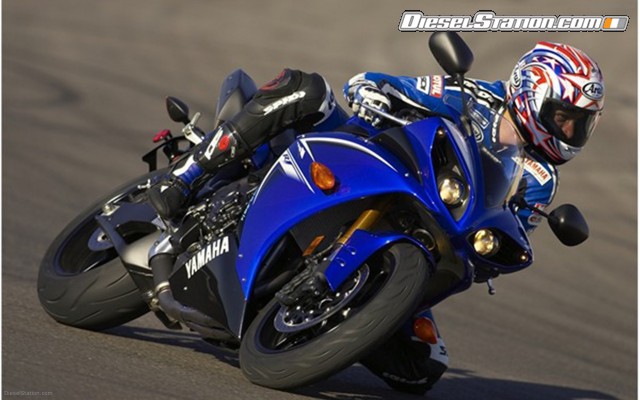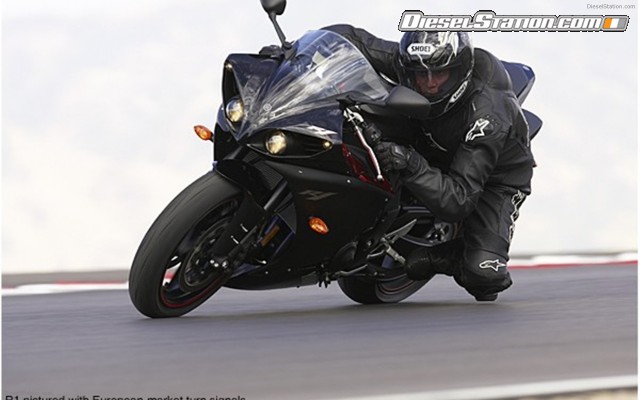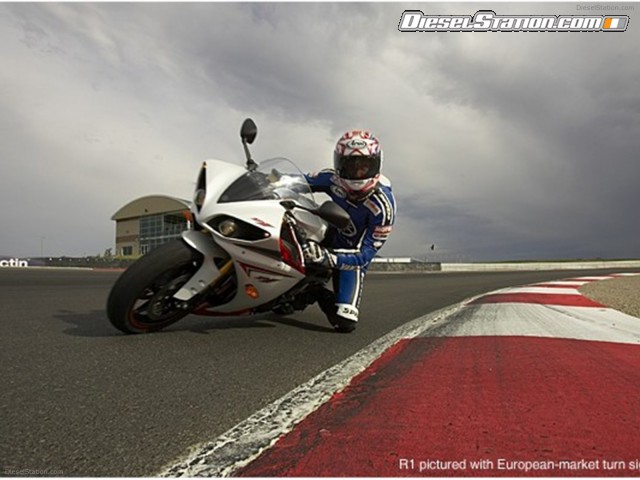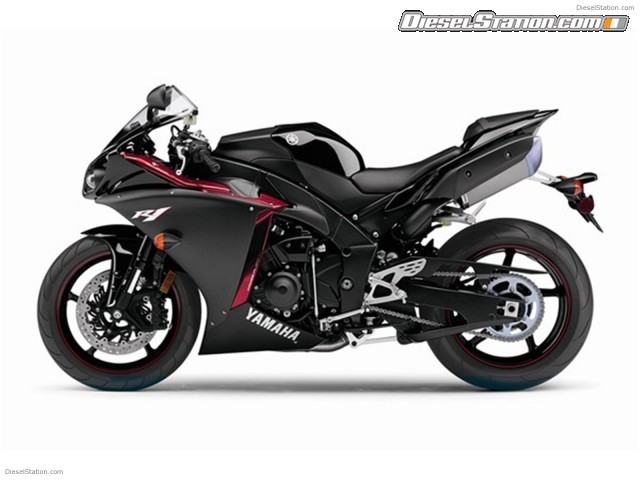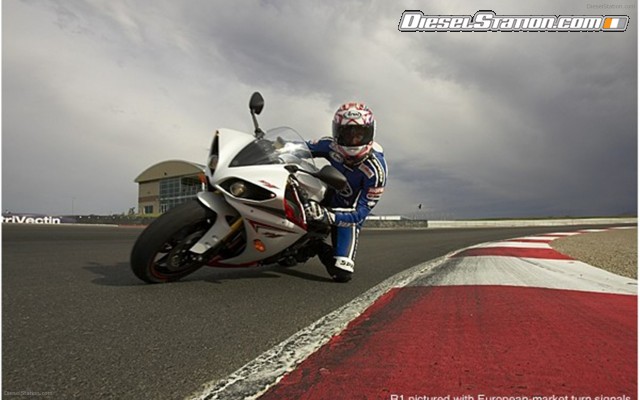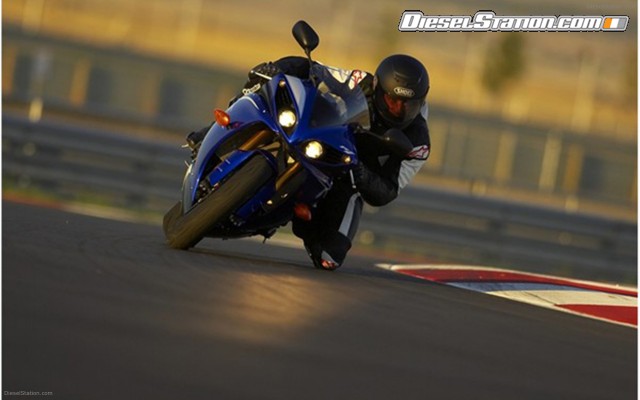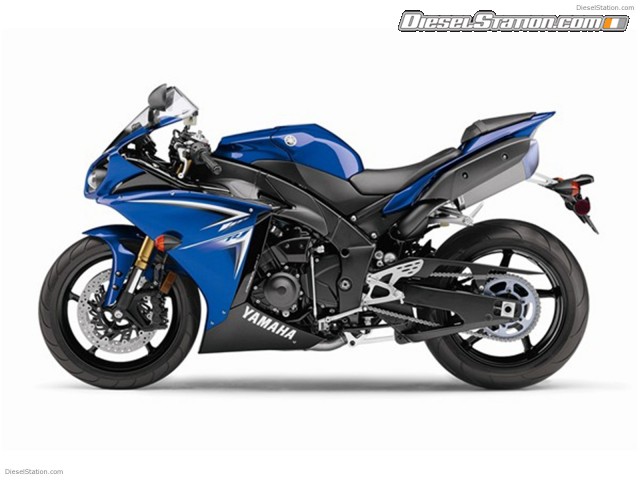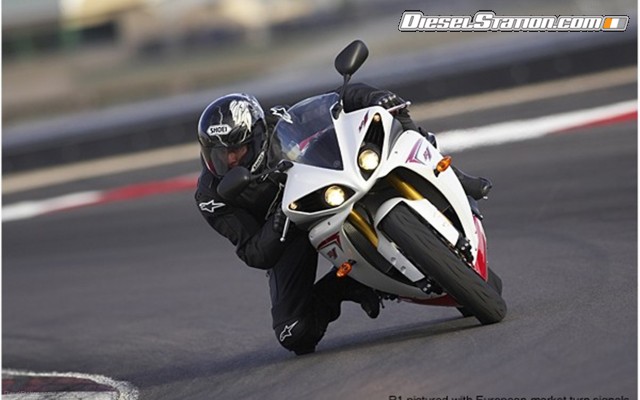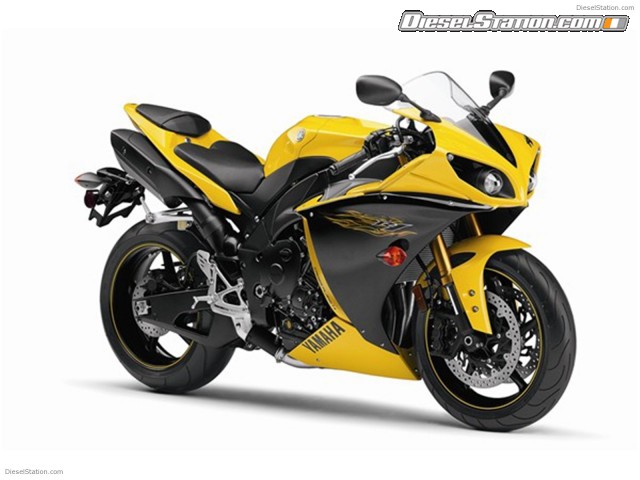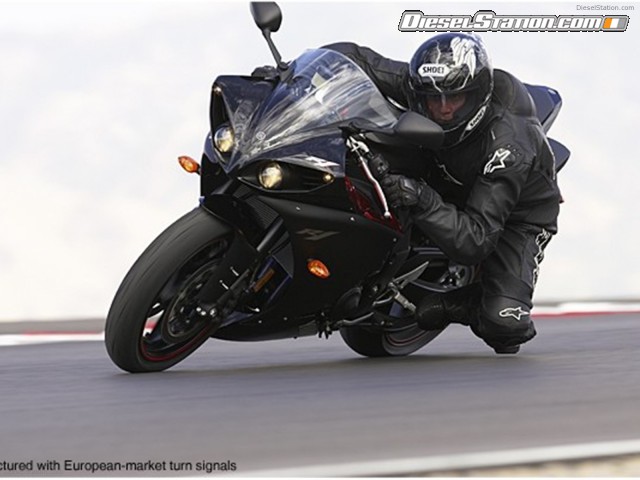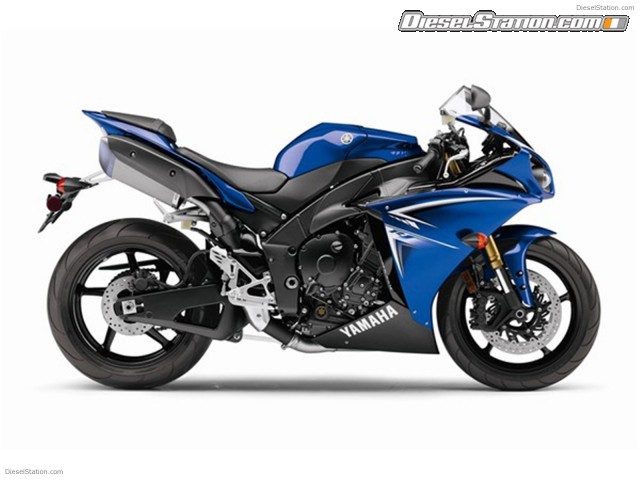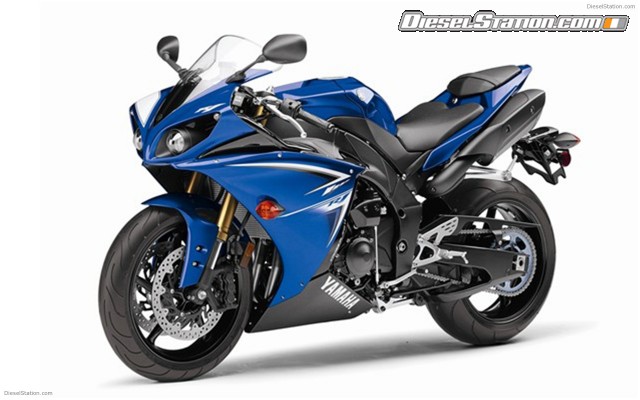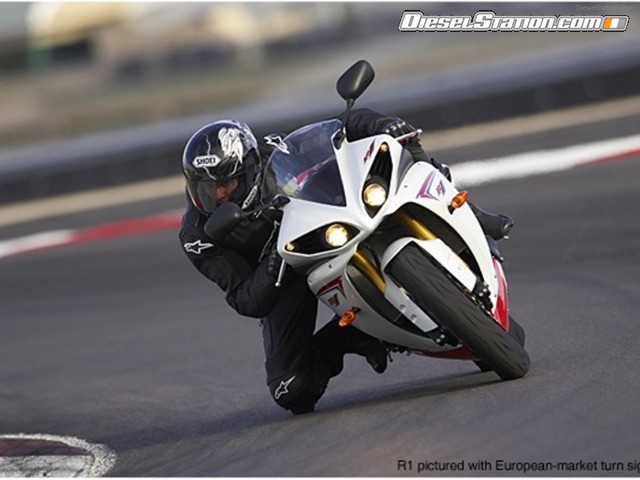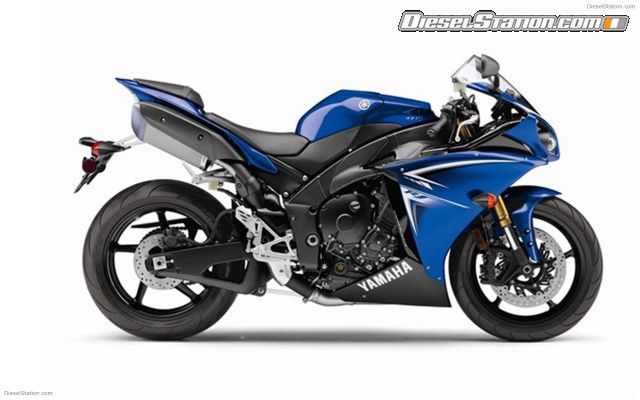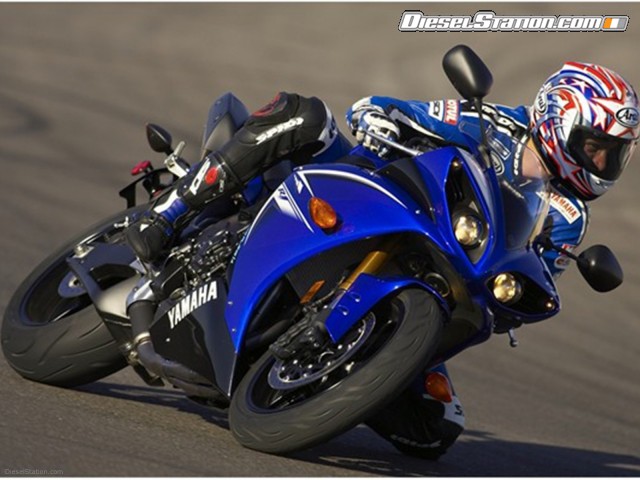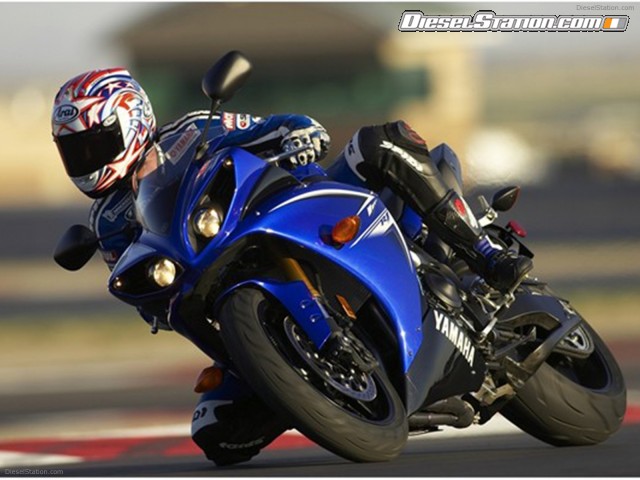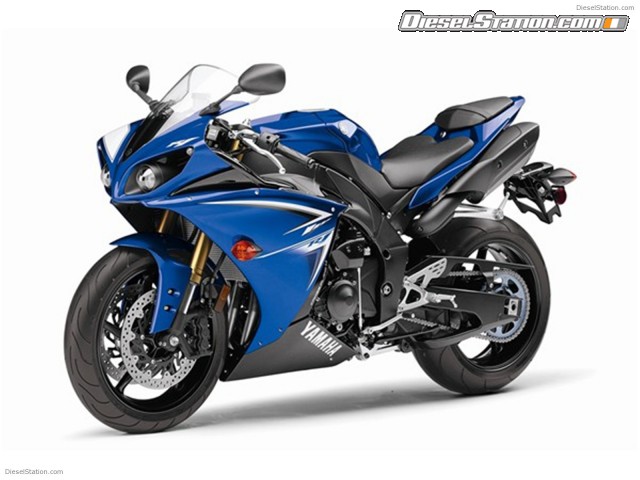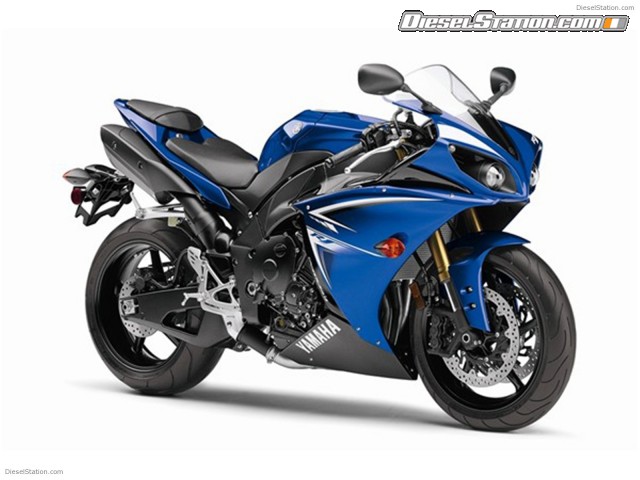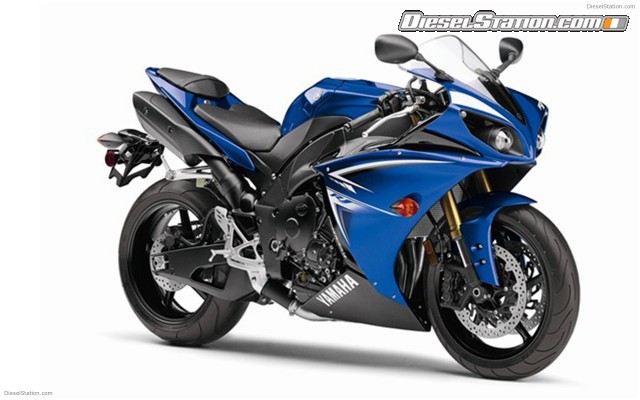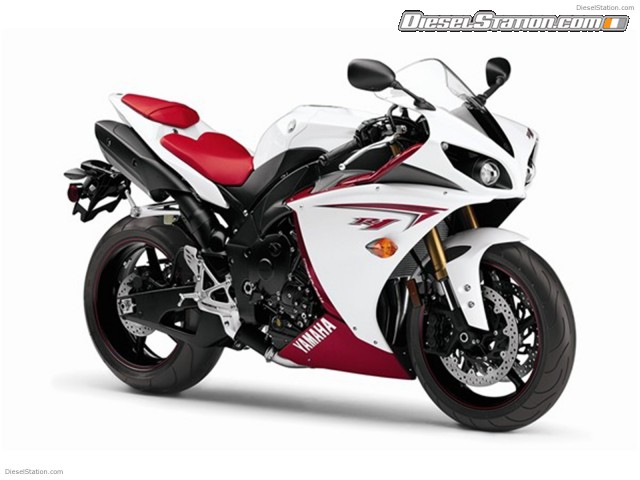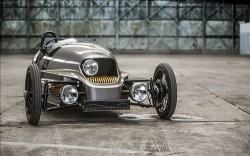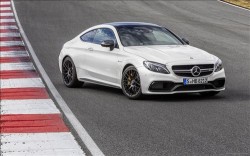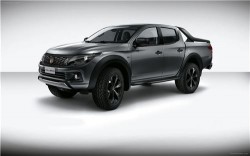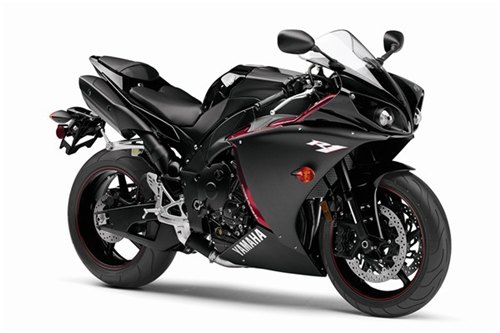The new-generation YZF-R1 is more closely linked to our MotoGP winning M1 than ever before. For 2009 this legendary motorcycle is equipped with an all-new 998cc inline four-cylinder engine with a crossplane crankshaft that runs with an uneven firing interval of 270º - 180º - 90º - 180º. This innovative new design ensures superb throttle linearity, giving a feeling that the rider’s throttle hand is directly connected to the rear tyre. The new engine feels and sounds smoother than ever, and emits an unforgettable growl from the exhaust. Pushing out 182 PS at 12,500 rpm with 115.5 Nm of torque at 10,000 rpm, this MotoGP-inspired engine is without a doubt the most technologically advanced powerplant ever seen on a Yamaha supersport bike. And for the ultimate in feel and controllability, the new-generation R1 runs with an all-new Deltabox chassis offering an idealized rigidity balance.
ALL NEW FOR 2009 YZF-R1
- In the supersport liter class, there's always lots of talk about power. You expect that. What you wouldn't have expected – until now – is a radically superior way to deliver that power. Introducing the 2009 YZF-R1, the first ever production motorcycle with a crossplane crankshaft. Crossplane technology, first pioneered in MotoGP racing with the M1, puts each connecting rod 90° from the next, with an uneven firing interval of 270°- 180°- 90°- 180°. This all but eliminates undesirable inertial crankshaft torque, which allows the engine's compression torque to build smoothly and provide a very linear power delivery out of the corners. It's a feeling that's simply unmatched, like having two engines in one: the low-rpm torquey feel of a twin with the raw, high-rpm power of an inline 4. In fact, the new YZF-R1 is not a continuation of existing supersport development; it is breakthrough technology that represents a paradigm shift in both technology and performance.
- This next-generation R1 keeps all the technological superiorities developed for its predecessor: YCC-T (Yamaha Chip Controlled Throttle) is MotoGP inspired fly-by-wire technology used to deliver instant throttle response. YCC-I is Yamaha Chip Controlled Intake which is a variable intake system that broadens the spread of power. The fuel injection system provides optimum air/fuel mixtures for maximum power and smooth throttle response.
- The R1 features Yamaha D-MODE (or drive mode) with rider-selectable throttle control maps to program YCC-T performance characteristics for riding conditions. The standard map is designed for optimum overall performance. The “A” mode lets the rider enjoy sportier engine response in the low- to mid-speed range, and the “B” mode offers response that is somewhat less sharp response for riding situations that require especially sensitive throttle operation. Switching maps is as easy as pushing a button on the handlebar switch.
- In keeping with this machine's exceptional cornering ability and crisp handling, the all new aluminum frame has been designed to offer exceptional rigidity balance. The rear frame is now lightweight CF die-cast magnesium, contributing the optimum mass centralization. Suspension includes new SOQI front forks which use one of the tricks developed for our winning MotoGP bikes: independent damping. The left fork handles compression damping and the right side handles the rebound damping. And the rear shock adopts new bottom linkage for optimum suspension characteristics.
- All new bodywork does more than add break-away-from-the- crowd styling. Completely new, the new model has a more serious, less busy look. The side fairing is smoother for a sleeker appearance. And, instead of the usual four bulb headlight design, the '09 model now has only two projector-type bulbs mounted closer to the nose of the bike. This positions ram air ducts closer in for a more compact, smooth look. In addition, the rounded lenses are new and unique to the supersport industry.
Engine:
- Crossplane crankshaft technology proven in victory after victory on MotoGP machines provides a high-tech uneven firing interval. Unlike typical in-line-four engine design, where the two outer and two inner pistons move together in pairs with 180°intervals, the crossplane crankshaft has each connecting rod 90° from the next with a unique firing order of 270° –180° – 90° – 180°. This overcomes the inherent fluctuations in inertial torque during each engine revolution, and the accompanying peaky torque characteristics. Instead, compression torque continues to build, giving the rider more linear throttle response with awesome power and traction out of the corners.
- To maximize rider comfort as well as power output, this newly designed engine adopts a coupling-type balancer that rotates in the opposite direction as the crankshaft.
- This engine features new forged aluminum pistons to take maximum advantage of the power characteristics. As proven on previous models, titanium intake valves are lightweight titanium.
- A forced-air intake system is adopted to increase intake efficiency by using the natural airflow during riding to pressurize the air in the air cleaner box. This contributes to outstanding power delivery characteristics in the high-speed range, while the design also helps to minimize intake noise.
- Slipper-type back torque-limiting clutch greatly facilitates braking/downshifting from high speed.
- The exhaust system is completely new. It's meticulously designed to enhance engine output while, thanks to its threeway catalyst technology, also reducing exhaust emissions. The silencer is a single expansion type, and, the sound coming through from the unique crossplane-crankshaft-equipped engine is unlike any other in-line four cylinder production supersport.
- This fuel-injected engine takes full advantage of YCC-T (Yamaha Chip Controlled Throttle), the MotoGP-inspired fly-by-wire technology used to deliver instant throttle response. There's also YCC-I, Yamaha Chip Controlled Intake, the variable intake system that broadens the spread of power. Fuel injectors have 12 holes for precise fuel delivery that translates to the most power from every fuel charge.
- Have it your way, thanks to Yamaha D-MODE variable throttle control. There are three modes that control how YCC-T responds to throttle input from the rider. The selectable “A” mode puts more emphasis on acceleration in low to midrange rpm. “B” mode, on the other hand, provides less sharp response to input for riding situations that require especially sensitive throttle operation. Selecting the map you want is as easy as pressing button on the handlebars.
Chassis/Suspension:
- The frame is completely revamped, with a combination of uncompromising rigidity where needed along with carefully achieved flex for the precise rigidity balance this bike needs to give the rider the full benefit of its handling and engine characteristics. No one-technique-fits-all-needs design, it is a sophisticated combination of CF die-cast, stamping, and gravity casting… the exact technology needed for each portion of this advanced frame.
- New SOQI front forks take a page from the championship-winning design of our MotoGP weapon, the M1. Since both forks always move together, compression damping duties can be confined to the left fork, while rebound damping is precisely handled by the right fork.
- The new SOQI rear shock both high and low speed compression damping plus an easy-to-use screw adjustment for preload. This unit also adopts a pillow-ball-type joint for exceptional shock absorption, road hold feeling, and damper response. To achieve maximum performance, a new bottom linkage is used to work with the rest of the chassis refinements for brilliant, crisp handling characteristics.
- Factory racers get machines tailored to their preferences. Welcome to the club. R1 has adjustable footrests, with a 15mm height and 3mm front-to-rear adjustment.
- The press-formed fuel tank has a shape developed using 3-D simulation analysis technology. The elongated shape of the tank allows it to fit neatly within the frame in a way that promotes concentration of mass.
Additional Features:
- The newly designed instrumentation includes everything a rider wants to know, including gear position.





